Natalie Cooper is Senior Manager and Robert Lamm is an independent senior advisor, both at the Center for Board Effectiveness, Deloitte LLP; and Randi Val Morrison is Vice President, Reporting & Member Support at the Society for Corporate Governance. This post is based on their Deloitte memorandum. Related research from the Program on Corporate Governance includes Politics and Gender in the Executive Suite by Alma Cohen, Moshe Hazan, and David Weiss (discussed on the Forum here).
The landmark events of 2020 surrounding systemic racism and racial equality have led many companies and their boards to consider their practices related to diversity, equity, and inclusion (DEI). For some, the events present an opportunity to reevaluate and enhance current practices; for others, they may prompt the exploration and implementation of actions and practices to advance DEI, within and outside of their organizations, for the first time.
This post explores some ways in which companies and boards have responded to these recent events and other management- and board-focused practices pertaining to DEI. It presents findings based on an August 2020 survey of members, representing more than 200 companies, of the Society for Corporate Governance. We would expect the findings to evolve over time, particularly as they pertain not only to corporate governance, but also to a societal matter, where calls for action and change appear to be ongoing and growing.
Findings
The findings below pertain to all companies surveyed. Respondents, primarily corporate secretaries,
in-house counsel, outside counsel, and other governance professionals, represent 91% public companies and 9% private companies of varying sizes of market capitalizations, annual revenues, and industries. [1]
Where applicable, commentary has been included to highlight differences among respondent demographics. The actual number of responses for each question is provided.
Access results by company size and type.
Which of the following (or similar) board committees, if applicable, oversee your company’s
diversity and inclusion function/strategy? Select all that apply. (172 responses)
Delegating this area of oversight to the Compensation Committee or to the Nominating/Governance Committee were the most common responses across all public companies, although nearly a quarter of all public companies (and 38% of small caps) retain responsibility at the full board level. Among private companies, the most common responses were oversight responsibility at the full board level or “not applicable,” at 36% each.

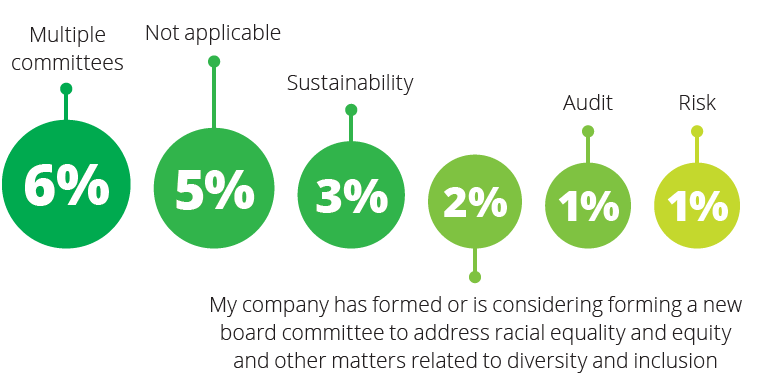
What information does management provide to the board on company practices, strategy, and performance related to diversity and inclusion? Select all that apply. (159 responses)
Among public company respondents, 61% said their management provides diversity metrics to the board, compared with 38% of private companies. On inclusion metrics, 41% of public companies overall said their boards receive this information, compared with 38% of private company respondents. For employment metrics, this is about one-third for public and private companies.
- 63% Overall diversity and inclusion strategy and progress against that strategy
- 59% Diversity metrics (e.g., leadership and workforce representation, recruitment strategies, customer diversity, supplier diversity)
- 41% Inclusion metrics (e.g., engagement survey results, findings from exit interviews)
- 33% Employment metrics (e.g., pay and benefits, promotion inequities, attrition inequities)
- 13% No information is provided to the board
- 3% Other
How often are diversity and inclusion related matters on the board agenda? (160 responses)
Most commonly, public company respondents have diversity and inclusion related matters on their board agendas “annually” (35%); the most common response for private companies is “as needed” (46%). This is an area that may evolve and normalize over time in light of the renewed focus on racial equality, as well as the fact that most companies are focused on their pandemic response, preservation, and resilience.
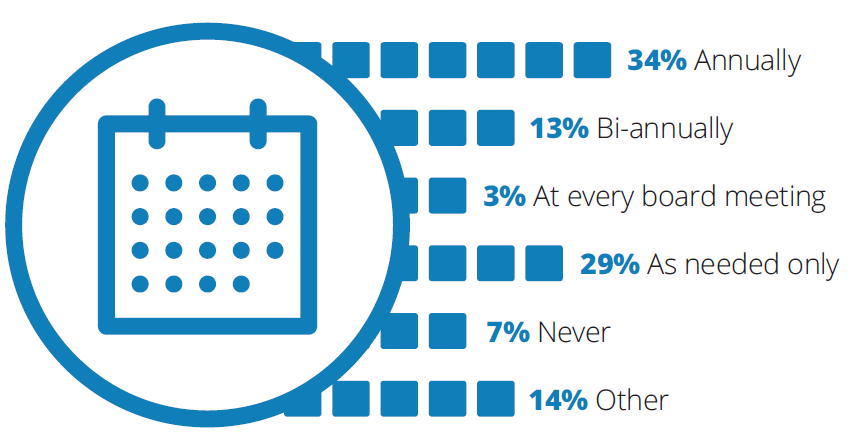
Within the last 2–3 months, has your board asked for, or has management provided to the board on its own initiative, enhanced data and other information about company practices, strategy, and performance relating to diversity and inclusion? (158 responses)
Among public company respondents, 57% answered “yes,” compared with 38% of private company respondents.
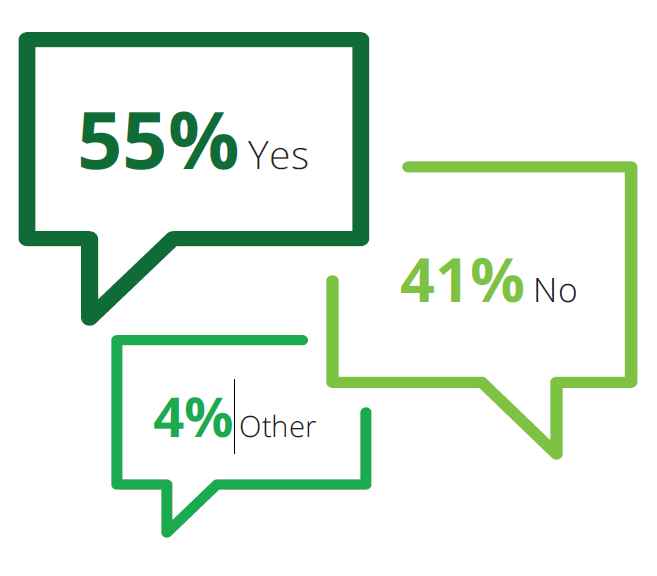
If your board directors/C-suite executives have elected to self-identify their race/ethnicity, please check the box that most closely approximates the percentage who belong to a racial or ethnic minority group. (Responses: 135 [board]; 128 [c-suite])
Respondents that indicated their board and C-suite had elected to self-identify were 64% and 62%, respectively. Among public companies, 63% and 61% of the board and C-suite, respectively, elected to self-identify; this was 75% each of the board and C-suite for private companies.
Of those of those who opted to answer the question, the most common responses as to percentage of the board and/or C-suite that is of a racial/ethnic minority were:
- Large caps: 23% said up to 25% of the board; 27% said up to 12% of C-suite.
- Mid caps: 23% said up to 25% of the board; 33% said 0% for C-suite.
- Small caps: 31% said up to 12% of the board; 38% said 0% for C-suite.
- Private companies: 25% said up to 12% and also up to 25% of the board; 38% said 0% for C-suite.
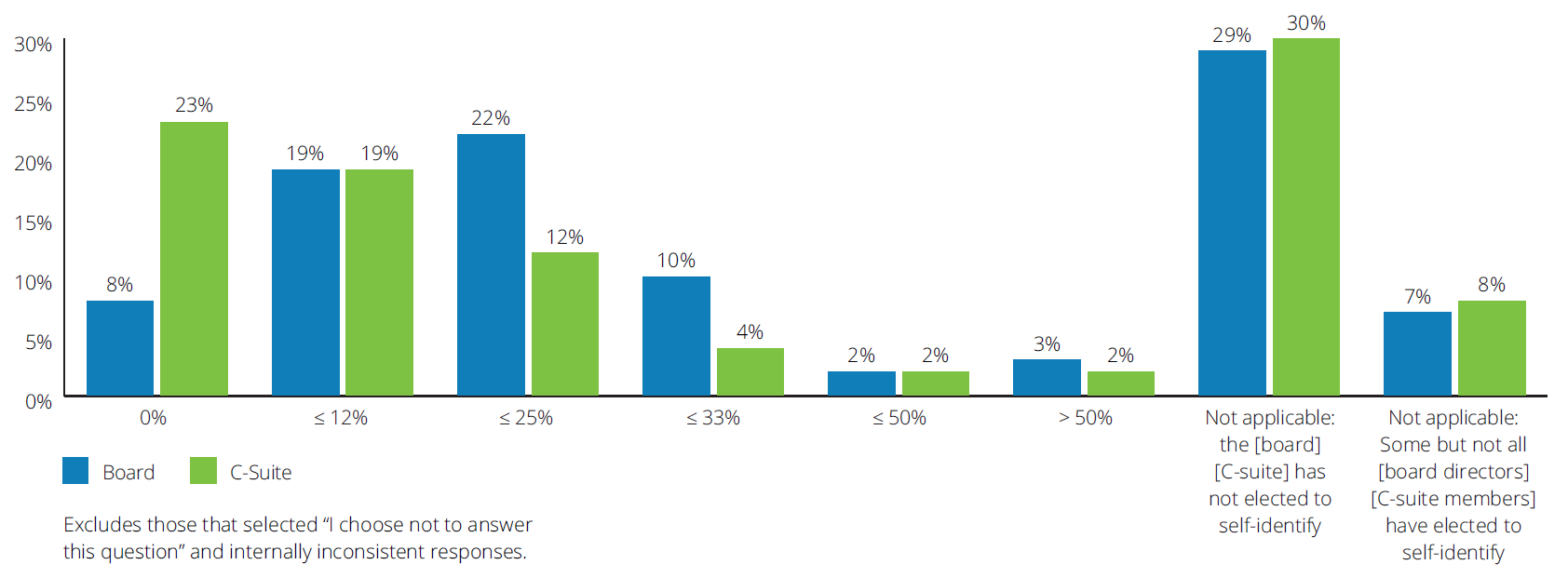
Has your company and/or board taken—or do they intend to take—any actions in response to recent events surrounding racial inequality and inequity? (194 responses)
Consistent across all respondents is that most companies and/or their boards have taken, or intend to take, actions in response to recent events surrounding racial inequality and inequity; 71% of public companies and 65% of private companies answered this question affirmatively.
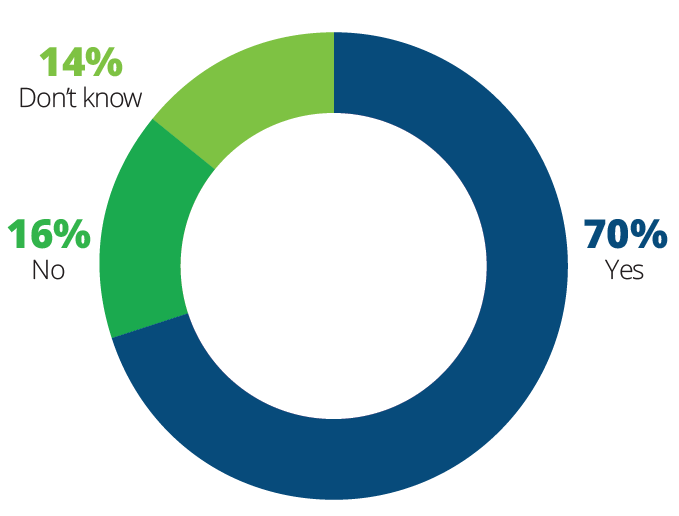
Which of the following actions has your company and/or board taken—or intends to take—in response to recent events surrounding racial inequality and inequity? Select all that apply. (116 responses)

Endnotes
1Public company respondent market capitalization as of December 2019: 43% large cap (>$10 billion); 47% mid cap ($700 million to $10 billion); and 10% small cap (<$700 million). Private company respondent annual revenue as of December 2019: 59% large (>$1 billion); 29% midsize ($250 million to $1 billion); and 6% small (<$250 million).
Respondent industry breakdown: 33% energy, resources, and industrials; 24% consumer; 24% financial services; 10% technology, media, and telecommunications; 7% life sciences and health care; and 1% other.(go back)
 Print
Print














